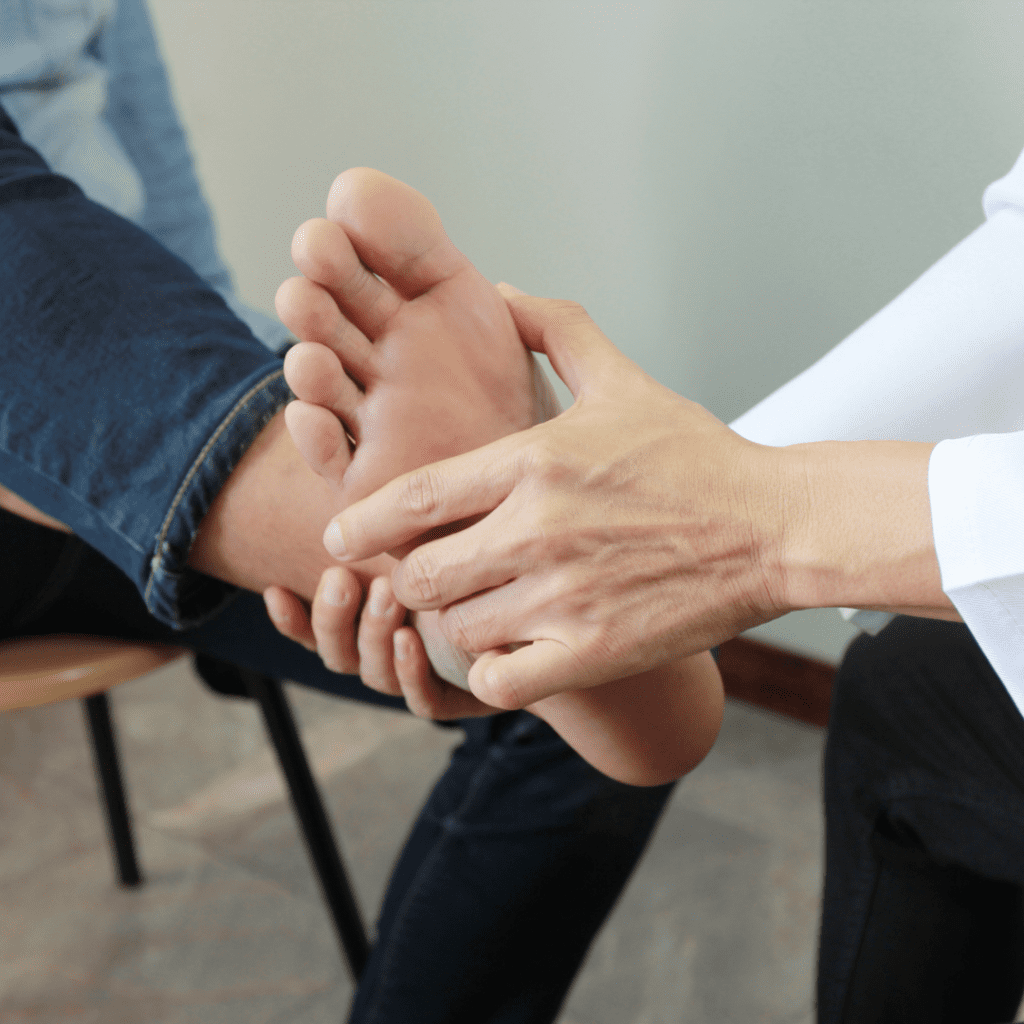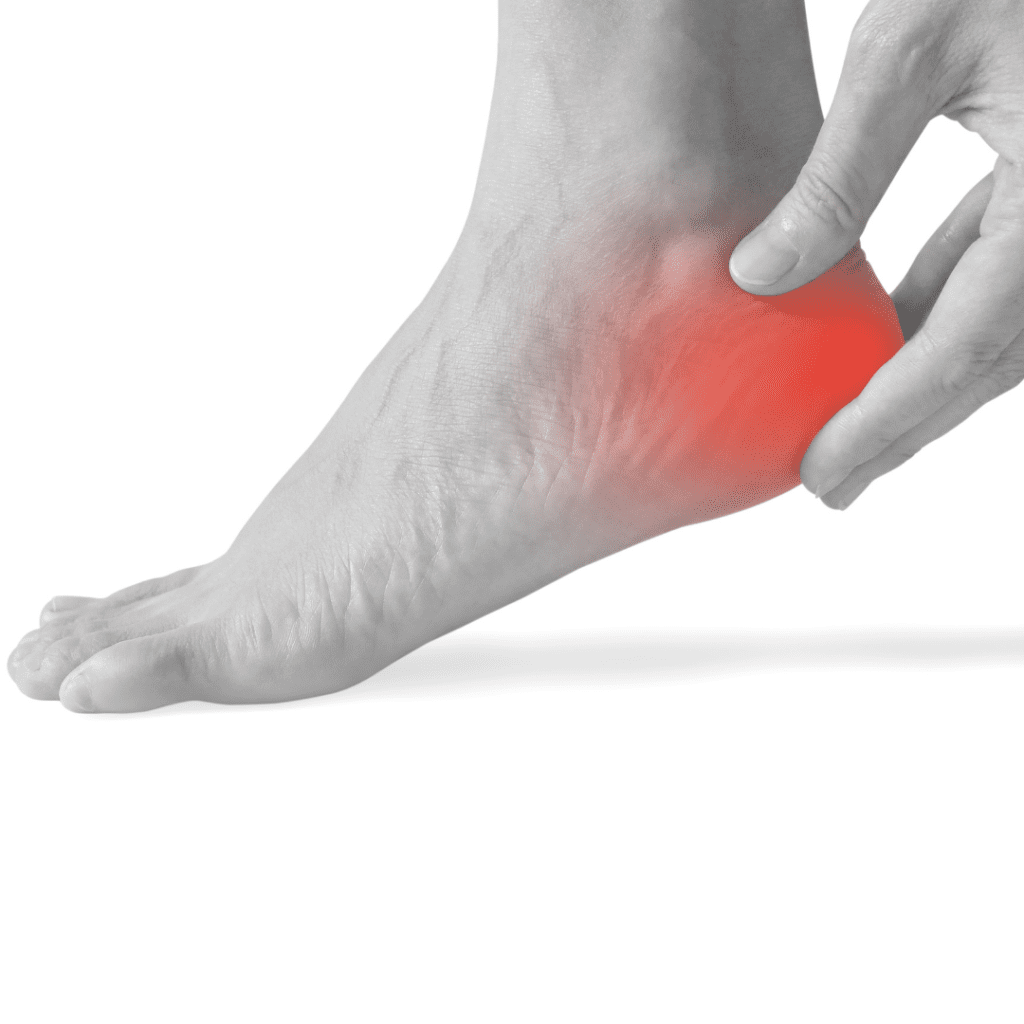Our Podiatrist That Accepts UnitedHealthcare in New York and Long Island are dedicated to providing the best in surgical and non-surgical treatments for orthopedic conditions affecting the foot and ankle.
All our doctors are extensively trained in the diagnosis and treatment of diseases and conditions of the lower leg, ankle and foot.
We treat conditions including heel pain and plantar fasciitis, arch pain, bunions, hammertoes, arthritis, tendinitis, fractures and sprains of the foot and ankle. We also specialize in surgical and non surgical treatment of diabetic problems affecting the foot including diabetic ulcers and Charcot foot. We provide custom orthotics and shoes.

Our practice philosophy is to examine patients on the whole rather than only from the foot and ankle. Many diseases present initially in the lower extremities, just as they may also in the later stages. A specialist, therefore, must always be able to think like a generalist–while still being a specialist.We are a group of professional, empathetic and interested practitioners who specialize in all conditions of the lower extremity within an inviting and state of the art office setting. Our office staff is cheerful, up to date and eager to assist you in all of your needs outside of the exam room.
Since the very early days of our training, each of us have discovered the love for our profession and the absolute art that medicine and surgery can and should always be.
We thank you in advance for your consideration in providing us with the absolute privilege of treating your conditions. When you need a Podiatrist That Accepts UnitedHealthcare look no further then the Foot And Ankle Surgeons Of NY.
When is Elective Foot Surgery the Best Option?
Elective foot surgeries are defined as operations that are scheduled and performed in advance because they are not for a medical emergency. Most surgeries are elective to best suit the patient, doctor, and hospital. They may be done for cosmetic reasons or for medical reasons to relieve pain and discomfort. Elective foot surgeries may include bunion removal, hammertoes, arthritis of the foot and ankle, and a plethora of others. Most people are hesitant to sign-up for surgery, even if it is mild. So when is the best time to schedule an elective foot surgery? How do you know it is the best option? Luckily, there is a Podiatrist That Accepts UnitedHealthcare, Foot and Ankle Surgeons of New York, that can answer all of your questions and ease your concerns regarding elective foot surgeries.
Examples of Elective Foot Surgeries:
There are multiple types of elective surgeries, especially for the feet. Some of which are:

- Bunion removal: Bunions find refuge on the forefoot, taking form as a prominent, unsightly bump. Bunions lead to discomfort and possible insecurity – many that suffer undergo a removal process. Surgery entails the removal of the growth.
- Hammertoes: Hammertoe is the deformity of toes that bend upwards resembling a hammer. This condition is extremely painful and can usually only be corrected with surgery. Surgery may include tendon transfer and joint resection to properly straighten the toes.
- Arthritis of the foot/ankle: When your joints experience inflammation buildup, this is known as arthritis. Depending on your case, the extent of surgery can vary in order to repair the damaged areas. Examples of surgical procedures for arthritis can include arthrodesis and arthroscopic debridement.
When Should I See a Specialist for Surgery? -Podiatrist That Accepts UnitedHealthcare
When should you seek professional attention for surgery? If you find your conditions are worsening and home-remedies are non-responsive, we recommend you contact a podiatrist. Foot and Ankle Surgeons of New York wants to get you back on your feet as soon as possible and offer an array of services to treat lower extremities. Seek attention to:
- Bunion removal: If you are experiencing persistent pain that does not improve with non-operative treatments. You should especially consider seeking professional help if your bunion begins affecting other toes by altering their alignment and causing more pain.
- Hammertoes: If you notice deformity and experience discomfort and perhaps immobility in your toes, seeking professional attention is imperative.
- Arthritis of the foot/ankle: In the case of extreme discomfort, your podiatrist may recommend surgery if nonsurgical treatment has been ineffective. Pain that causes disability is also an indication that surgery is necessary. Location and impact of the disease on your joints will determine what surgery will be executed.
How Can FAASNY Help?
If you have been experiencing discomfort in your feet, consider contacting a professional. A Podiatrist That Accepts UnitedHealthcare, Foot and Ankle Surgeons of New York, offer evaluations, treatments, and surgeries for a variety of podiatric lower extremities. Our team understands that each injury is unique and requires the individualized attention of a competent specialist – that’s why we are here to help! Visit our website to learn more about our surgical procedures and schedule an appointment today.
Podiatrist That Accepts UnitedHealthcare
We provide treatments for any and every condition of the lower leg, ankle, and foot. We are determined to get you feeling back to normal, and potentially better, with our efficient staff here at FAASNY. Bunions are one example of a condition that we are able to treat (otherwise known as Hallux Abductovalgus). Most people describe a bunion as a bump on the side of the big toe, but it is more complex. The bump may be the only visible change, but the bones in the forefoot are misaligned. The big toe leans toward the second toe, or even move all the way under it. The skin on the bottom of your foot may become thick and painful, as bunions are progressive. They begin with the shifting of the big toe, gradually changing the angle of the bones over the years and slowly producing the characteristic bump. Symptoms usually appear at later stages of the deformity.
We also treat Athlete’s foot (Tinea Pedis). Athlete’s Foot is caused by several types of fungal organisms. People often experience an itching sensation, cracking, peeling, or scaly skin. Athlete’s foot often commonly present in the space between the toes but can be more widespread and even cause blistering. These are just two of the many conditions we treat here at FAASNY. For more information on how we can help, please contact our Ankle Surgeon in Nassau County.
Our office accepts a variety of health insurance plans including Medicare and private carriers. Non-insured patients are welcomed and are charged on a fee for service basis. To minimize billing costs, co-pays, deductibles, and non-covered services are payable at the time of service. Credit cards, checks, cash, and money orders are accepted.

Heel Bone Fractures
Fractures of the heel bone can lead to an abundance of complications for the patient. In the majority of cases, immediate treatment from a Podiatrist That Accepts UnitedHealthcare will be required to treat this severe injury.
About the Heel Bone
The foot is made up of three main parts: the midfoot, hindfoot, and forefoot. The calcaneus, or heel bone, is located in the hindfoot. It is located beneath three bones that make up the ankle joint: tibia, fibula, and talus. The heel bone and the talus make up what is called the subtalar joint. This joint allows for sideways movement of the hindfoot and promotes balance on uneven surfaces.
Fractures
Although uncommon, fractures of the calcaneus can occur. Only 2% of all adult fractures are of tarsal bones, and only about half of those are calcaneus fractures. There are several ways that the calcaneus can become fractured. Common catalysts may include the following:
- Twisting injury.
- Motor vehicle accident.
- Fall from an elevated surface.
The severity of calcaneus fractures can vary depending on the way the injury is sustained. For example, the force of a car accident can result in the complete shattering of the bone, while a minor twist may only lead to a small crack in the bone. The greater the impact, the greater the damage to the calcaneus. For minor fractures, walking may still be possible with a limp. However, for a more major fracture, the calcaneus may become deformed from the injury.
If you are unsure if your heel bone is fractured, here are some symptoms to look out for:
- Swelling.
- Bruising.
- Pain.
- Deformity of the heel.
- Difficulty walking.
- Difficulty putting weight upon the foot.
What Can an Ankle Surgeon Do?
Because you do so much with your feet, a fracture to the heel bone is a very serious injury. If you suspect that your calcaneus is fractured, it is important to seek out the help of an ankle surgeon. Upon discussing and assessing your symptoms, a Podiatrist That Accepts UnitedHealthcare will be able to:
- Examine the movement and feeling of the toes and feet.
- Assess pulse in all areas of the foot to ensure sufficient blood flow.
- Search for potential injuries in other areas of the body.

Additionally, to properly diagnose a calcaneus fracture an ankle surgeon may perform an X-ray or a CT scan. Following the diagnosis of a calcaneus fracture via X-ray, an ankle surgeon will likely still order a CT scan due to the complexity of the bone. The CT scan will allow for a more detailed view of the foot and better assess the severity of the fracture.
After diagnosing the injury, there are several routes an ankle surgeon can take when it comes to treatment. For more minor injuries, the surgeon may recommend non-surgical treatment. Particularly, if pieces of the bone have not been displaced or broken, non-surgical treatment is a better option. The most commonly performed non-surgical treatment is immobilization. For this procedure, the surgeon will place a cast on the foot for 6 to 8 weeks in order to hold the bones in the foot in place while they heal.
For surgical treatment, there are more options available. Among these treatments include:
- Open reduction and internal fixation – During this procedure, the surgeon will make an incision in order to reposition bones to their normal alignment, using wires, metal plates, or screws.
- Percutaneous screw fixation – For this procedure, only smaller incisions are required. The surgeon will place small screws into the incisions in order to hold the fracture together.
Heel bone fractures are no laughing matter. Regardless of the corrective procedure performed by an ankle surgeon, the recovery time is quite long. For minor injuries and procedures, the recovery time can last about 3 to 4 months, while for worse injuries it can take up to 1 to 2 years to fully recover. That’s why you want to make sure to see the best ankle surgeon available to you. At FAASNY, our skilled ankle professionals will ensure you are under the best care possible. We will assess your injury and perform the procedure that is right for you. Don’t wait, contact us today!
Broken Toes
At Foot and Ankle Surgeons of New York, your local Podiatrist That Accepts UnitedHealthcare has treated a number of foot-related ailments. Commonly, broken toes are often reported and treated by our podiatrists. Fractures of these structures can lead to instability and a long list of agonizing symptoms.
Causes and Symptoms
As with any injury, there are a large number of ways that one could break their toe. Typically, a broken toe is the result of trauma or force to the foot or toe itself. Dropping a heavy object on the toe or stubbing it against a piece of furniture is among the most frequent stimulants for fracture. Additionally, a toe can break while playing many different sports that require repetitive, prolonged activity. You will definitely know if you have a broken toe due to the symptoms of the break. Among the most common symptoms, please consider the following::

- Pain.
- Stiffness.
- Swelling.
- Bruising.
- Deformity of the toe.
- A bent appearance of the toe.
- Difficulty walking.
- Wearing certain footwear that creates pain.
The Risks
There are several complications that can result from a broken toe if left untreated. Such complications can occur within minutes or days of sustaining the injury, while others may not be present for weeks or years following the initial injury. Among these risks, please consider the following potential issues:
- Open fracture – Although rare, the bone that is broken may tear through the skin. Without proper care, this can turn into an infection that may require surgery in the future. The wound should be cleaned thoroughly and antibiotics should be applied in order to prevent the spread of infection.
- Nail injuries – Upon breaking a toe, a collection of blood may develop beneath the toenail of the affected toe. This is called a subungual hematoma. If it is large, it may need to be drained by a podiatrist or foot/ankle specialist. In severe cases, removal of the entire toenail may be required.
- Nonunion – Incomplete healing of the injury.
- Malunion – Improper healing of the injury.
Additionally, arthritis, stiffness, pain, or deformity can be future results of a broken or fractured toe. In order to avoid the risks associated with a broken toe, you should contact FAASNY and consult with a Podiatrist That Accepts UnitedHealthcare as soon as you are aware of the injury.
How a Podiatrist That Accepts UnitedHealthcare Can Help
Depending on the location and severity of the injury, our specialists may need to reduce the bone and place it in a splint or a cast for proper healing. Also, if there is an open wound on or near the break, our foot surgeon may need to administer a tetanus shot and/or apply an antibiotic to the area.
At FAASNY, our Podiatrist That Accepts UnitedHealthcare is ready to help you with any kind of foot injury. Our experienced staff is dedicated to helping you heal as quickly and safely as possible. The goal is to get you back on your feet and keep you pain-free. Don’t wait, contact us today with your foot care needs!
Shin Splints
Shin splints are known for causing pain in the front of the lower leg. The pain experienced here is a result of inflammation of the tendons, muscles, and tissues surrounding the shin. Shin splints commonly occur as a result of overuse, usually from playing a sport. Shin splints can also occur due to an increase in the level and amount of training being done. Our staff here at Foot and Ankle Surgeons of New York have treated shin splints regularly with the help of our Podiatrist That Accepts UnitedHealthcare. If you’re concerned about the condition of your ankles, we ask that you keep a sharp eye out for the following symptoms:
Symptoms associated with shin splints can include the following:
- Soreness.
- Tenderness.
- Pain in one or both legs.
- Pain in the front of the shin.
- Pain worsens during or following exercise.
- The pain subsides with rest.
Who is at risk?
Being that it is an overuse injury, shin splints are most common among athletes. The athletes who are the most susceptible to shin splints are runners, gymnasts, and dancers. Ordinarily, this is due to the tremendous amount of stress that is placed on the shins that these sports require.
Additional risk factors for shin splints can include the following:
- Running on uneven surfaces.
- Flat feet.
- High arches.
- Military training.
- Beginning a running program.
- Increased duration and/or frequency of exercise.
If you believe that you are suffering from shin splints, our Podiatrist That Accepts UnitedHealthcare at FAASNY can help you along the road to recovery.

How to avoid shin splints
There are several steps that can be taken in order to prevent shin splints from affecting you. Among these steps may include the following tips:
- Don’t over-do it – As much as exercise has its benefits, going too hard or doing too much can have adverse effects. You don’t want to overload your shins with too much high-impact activity.
- Reduce impact – If you play a high-impact sport, it is recommended that you cross-train with lower impact exercises such as swimming, biking, or walking. Including these in your routine and reducing the amount of high-impact training that you are doing can help to reduce the stress placed upon the shins.
- Introduce strength training – Prepare your shins and legs for high-impact by incorporating strength training into your workout routine. Strength training will help to strengthen and stabilize the legs, ankles, hips, and core.
- Wear the right shoes – Choose the proper footwear for the exercise you are performing. Take your time and really ensure that you are choosing the right shoe. Also, it is important that runners replace their shoes every 350 to 500 miles they run.
- Arch supports – Especially for those who have flat arches, arch supports can help prevent the pain produced by shin splints.
- Insoles – Shock-absorbing insoles can reduce symptoms and prevent shin splints from returning.
If you still find yourself with shin splints consult with our foot surgeon in Nassau County as soon as possible for treatment options.
Contact Us Today!
At FAASNY, our experienced and dedicated staff is ready to get you the relief that you’ve desired. Our Podiatrist That Accepts UnitedHealthcare can assess and treat your injuries and help get you back to feeling comfortable. Contact us today to begin your journey to a pain-free life!
Tendon tears and ruptures
Tendons are the strong fibers that unite tissue to bone. Sometimes, tendons snap, split, or break. If this does occur, it can be very serious and result in unbearable discomfort, known as a tendon tear or rupture. One of the most common tendons to experience ruptures or tears within your body is in your Achilles. It is located in the back of your foot, above your heel. It is the spot that connects your calf muscle to the heel of your foot. Without your Achilles, you would not be able to stand on your tiptoes or push off of your foot, especially while running. If you have experienced a tear or rupture in your Achilles, it is time to seek out the help of a medical professional, like those at Foot and Ankle Surgeons of New York a Podiatrist That Accepts UnitedHealthcare.
Common Symptoms:
The symptoms that come along with an Achilles tendon tear or rupture can be very uncomfortable. For example, if you have recently torn or ruptured your Achilles tendon, it is unlikely that you will be able to walk comfortably. The general symptoms, you may also experience, of a tendon tear or rupture include:
- Severe pain and stiffness
- Bruising
- A snap or pop
- Unable to move or use the area
- Weakness of area
- Maybe swollen or red
What can cause a tear or rupture?

General causes of a rupture or tear in the tendon include:
- Age – as you grow older, your tendons weaken, making it easier for them to be injured.
- Direct trauma
- Strenuous activity
- An excessive amount of strain on your weight-bearing foot.
Other common causes include the regular usage of antibiotics, as well as repetitive motions due to your job, sports, or just life in general.
How to determine if you are injured?
Leaving a tendon tear or rupture untreated could lead to more serious issues in the future. When visiting a podiatrist, they will likely conduct a physical examination of the injured tendon to determine what the next best treatment option is for you. Listed below are common test options used to help your Podiatrist That Accepts UnitedHealthcare determine what comes next:
- Thompson Test – During this test you will kneel on a chair while dangling your foot off the edge. A doctor will then apply pressure or squeeze a certain area on your calf – if your toes do not point downward during the squeeze then it is likely you have a ruptured Achilles tendon.
- Blood Pressure Cuff Test – A doctor places a blood pressure cuff on your calf and will inflate it to about 100 mm Hg. While inflated, your doctor will adjust your foot to be in the toes-up position. The amount the pressure increases will determine whether or not your tendon is intact.
- X-ray – If a doctor takes an x-ray, they’ll look to see if it shows a darkening of the space in front of your Achilles tendon or if the tendon appears to be thicker.
- MRI or Ultrasound – These tests can be used to determine how serious your tear or rupture is.
Treatments:
Treating a tendon rupture or tear can be done both surgically and nonsurgically. Your doctor will determine which option is best for you based on the severity of the rupture or tear, as well as how active of a lifestyle you live and the status of your overall health.
- Nonsurgical – People who have suffered a minor rupture, less active, or suffer from a medical condition that prevents them from getting surgery are most likely to receive this form of treatment. This can include wearing a cast, brace, or walking boot.
- Surgical – Surgery is the best option for preventing re-rupture. With various forms of surgical procedures, you can increase your push-off strength, muscle function, and ankle movement.
- Physical Therapy – While technically, PT can be considered a nonsurgical treatment, it is important to highlight how beneficial it is when treating a tendon rupture. It can help the healing process whether you received nonsurgical or surgical treatment.
FAASNY | Podiatrist That Accepts UnitedHealthcare
At Foot and Ankle Surgeons of New York, we offer expert treatment for everything from foot and ankle trauma to surgery. If your rupture or tear is severe, we have podiatric surgeons on staff who specialize in the lower extremity. Our Podiatrist That Accepts UnitedHealthcare will properly hold an evaluation and assess if surgery is the proper treatment plan for you. Visiting FAASNY will help give you the answers you need for optimal recovery!
